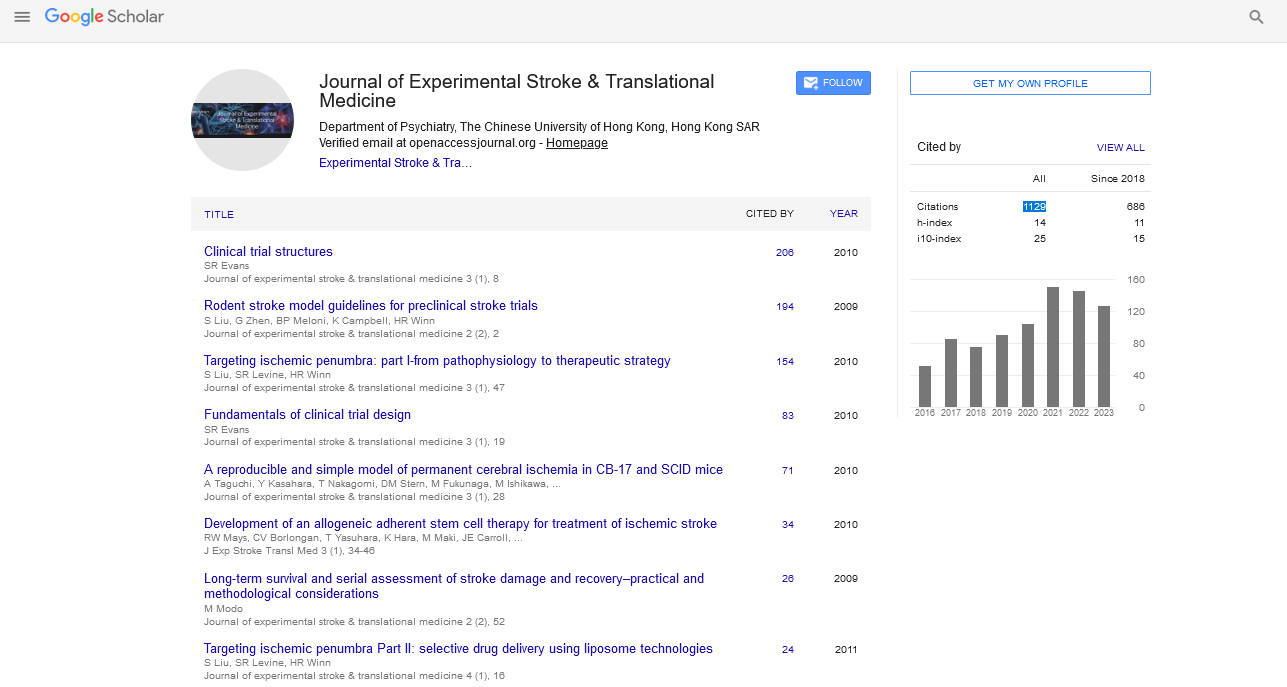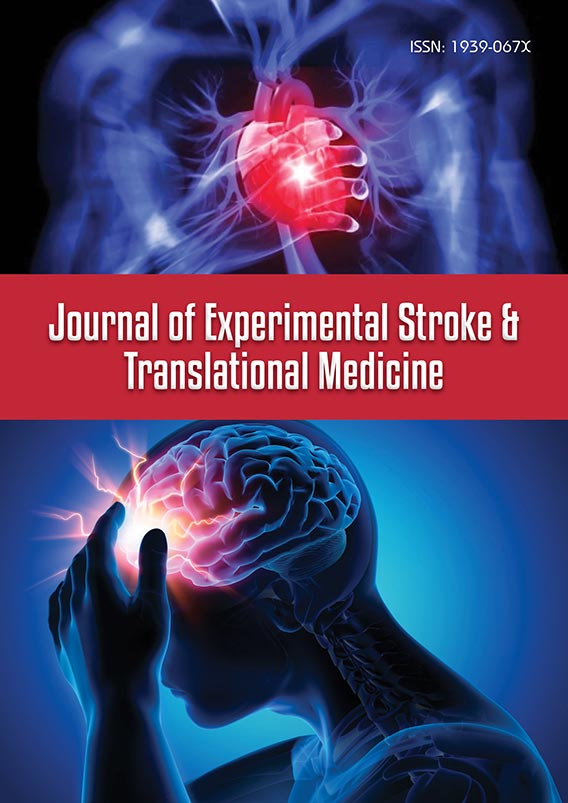Perspective - Journal of Experimental Stroke & Translational Medicine (2024) Volume 16, Issue 6
Epidemiology of Stroke: A Comprehensive Overview
- Corresponding Author:
- Muzamil Hussain
Department of Epidemiology, University of Venice, Venezia, Italy
E-mail: muzaim76@gmail.com
Received: 04-Nov-2024, Manuscript No. jestm-24-153507; Editor assigned: 7-Nov-2024, PreQC No. jestm-24-153507 (PQ); Reviewed: 21-Nov-2024, QC No. jestm-24-153507; Revised: 03-Dec-2024, Manuscript No. jestm-24-153507 (R); Published: 31-Dec-2024, DOI: 10.37532/jestm.2024.16(6).277-278
Introduction
Stroke, a leading cause of mortality and long-term disability worldwide, poses a significant public health challenge. It occurs when the blood supply to part of the brain is interrupted or reduced, preventing brain tissue from receiving oxygen and nutrients. Despite advances in prevention and treatment, the global burden of stroke remains substantial. This article provides a detailed examination of the epidemiology of stroke, including its incidence, prevalence, risk factors, geographic distribution and the impact on healthcare systems.
Description
Incidence and prevalence of stroke
Global perspective: Stroke is the second leading cause of death globally, after ischemic heart disease. According to the (GBD) study, approximately 12.2 million people experience a new stroke each year, resulting in over 6.5 million deaths annually. The lifetime risk of stroke is estimated to be 1 in 4 for individuals over the age of 25, highlighting the widespread nature of this condition.
Types of stroke
Strokes are classified into three main types:
Ischemic stroke: Accounting for 87% of all strokes, ischemic stroke results from the obstruction of blood flow due to a thrombus or embolism.
Hemorrhagic stroke: Representing 10-15% of cases, hemorrhagic stroke occurs due to the rupture of a blood vessel, leading to intracerebral or subarachnoid hemorrhage.
Transient Ischemic Attack (TIA): Often called a “mini-stroke,” TIAs are temporary episodes of ischemia without permanent damage, serving as a warning sign for future strokes.
Risk factors for stroke
The risk factors for stroke can be broadly categorized into modifiable and non-modifiable factors.
Non-modifiable risk factors
Age: The risk of stroke doubles with each decade after age 55.
Gender: Men have a higher incidence of stroke than women, but women experience more severe outcomes.
Genetics: A family history of stroke increases the likelihood of experiencing one.
Ethnicity: African, Hispanic and South Asian populations have a higher risk of stroke compared to Caucasians, partly due to genetic predispositions and environmental factors.
Modifiable risk factors
Hypertension: The most significant risk factor for stroke, accounting for nearly 50% of ischemic strokes. Effective management of blood pressure can reduce stroke risk by up to 40%.
Diabetes mellitus: Increases the risk of ischemic stroke by promoting atherosclerosis and microvascular disease.
Hyperlipidemia: Elevated cholesterol levels contribute to the formation of atherosclerotic plaques, leading to ischemic strokes.
Smoking: Tobacco use doubles the risk of ischemic stroke and increases the risk of hemorrhagic stroke by 1.5 times.
Obesity: Linked to hypertension, diabetes and hyperlipidemia, obesity is a significant modifiable risk factor.
Physical inactivity: Sedentary lifestyles contribute to the development of cardiovascular disease and stroke.
Diet: Diets high in salt, sugar and unhealthy fats increase the risk of stroke, while diets rich in fruits, vegetables and whole grains are protective.
Geographic distribution and disparities
Stroke in high-income vs. low-income countries: The global distribution of stroke highlights significant disparities between high-income and low-income countries. In HICs, healthcare infrastructure, early detection and preventive measures have led to a decline in stroke mortality rates. In contrast, LMICs face a growing stroke burden due to limited resources, lack of awareness and inadequate healthcare access.
Urban vs. rural disparities: Urbanization has contributed to an increase in stroke risk factors, such as sedentary lifestyles, unhealthy diets and air pollution. However, rural areas often lack specialized healthcare facilities, resulting in delayed diagnosis and treatment, leading to poorer outcomes.
Economic and social impact of stroke
Healthcare costs
Stroke imposes a significant economic burden on healthcare systems. The costs associated with stroke include:
Acute care: Hospitalization, imaging and thrombolytic therapy.
Rehabilitation: Physical, occupational and speech therapy.
Long-term care: Management of disabilities and comorbidities.
In the United States alone, the annual direct and indirect costs of stroke are estimated to exceed $50 billion.
Social impact
Stroke survivors often face long-term physical, cognitive and emotional challenges, impacting their quality of life and ability to return to work. Caregivers also experience significant emotional and financial stress.
Conclusion
Stroke remains a critical global health issue with significant implications for individuals, families and healthcare systems. Understanding the epidemiology of stroke is essential for developing effective prevention, treatment and rehabilitation strategies. By addressing modifiable risk factors, reducing health disparities and leveraging advancements in medical technology, it is possible to mitigate the impact of stroke and improve outcomes for millions of people worldwide.

